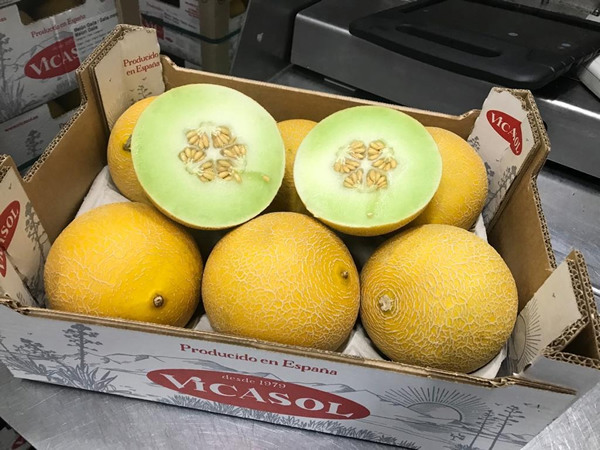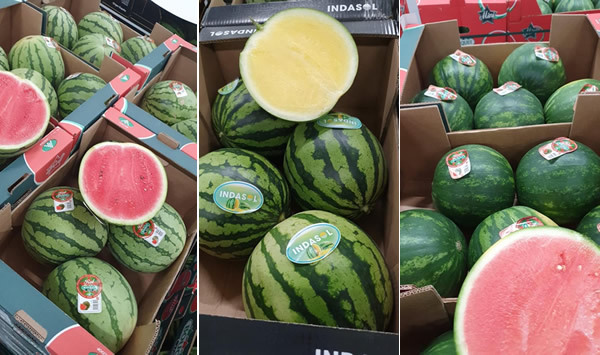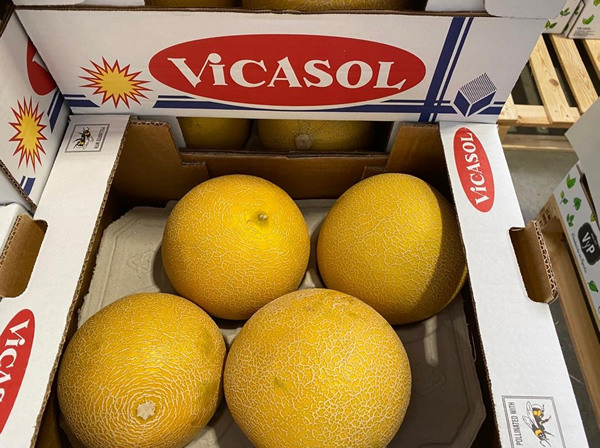In the Netherlands, 4Fruit Company received the first Spanish Galia melons on Friday. There are plenty of watermelons available, but the yellow and Piel de Sapo melon supply is still limited. Pieter de Ruiter says prices are still at a nice level, though there could be slightly more demand. "Plenty of trade is coming in, but the weather isn't helping yet. The melons from Almeria look good. Lots of watermelons were planted, but there are far fewer Galias and Cantaloupes. There are the usual yellow and Piel de Sapo melon plantings," he says.

"Spanish watermelons are priced between €1.10 and €1.20 for sizes 3 and 4, €1 for size 5, €1.10 for size 6, and €0.80 and €0.90 for size 7. Galia melons are priced at €8.50 to €9 for size 4, €9-€9.50 for size 5, and €9 for the 'sixes'. Cantaloupe, when available at all, goes for between €11 and €12."
"And yellow melons for €12 to €13. Generally decent prices, but we need to start selling more because a lot more is coming in. There are also still plenty of overseas melons on the market. Those are mostly in programs and go for good prices, too," Pieter explains.

He says Murcia's water availability will be the stone fruit season's determining factor. "The reservoirs are less than half full. Normally there's little rainfall from May to June, but it's also been very dry for the past two months. That's causing an extreme water shortage. Desalination plants are being used to mitigate that, but those use a lot of energy."
"The infrastructure isn't quite up to the task either. Water is going to be the true determining factor this season. There will also be plenty of peaches, plums, and nectarines; the trees are full. But again, the season's course depends on water availability," Pieter concludes.

 For more information:
For more information:
Pieter de Ruiter
4 Fruit Company
30 Handelsweg
2988 DB, Ridderkerk, NL
Tel: +31 (0) 180 641 902
Email: pr@4fc.nl
Website: www.4fruitcompany.nl
